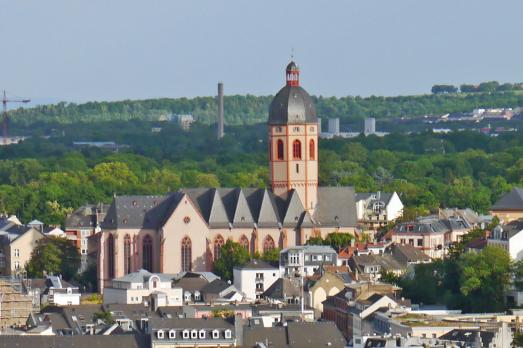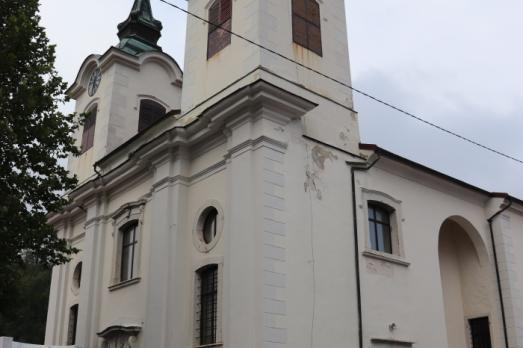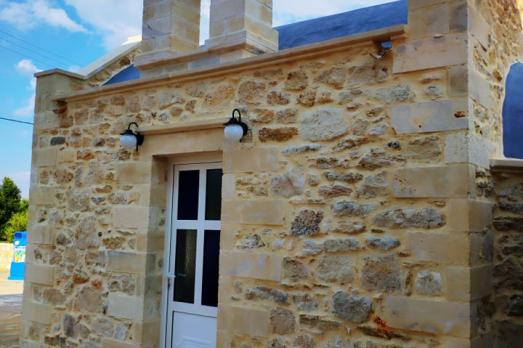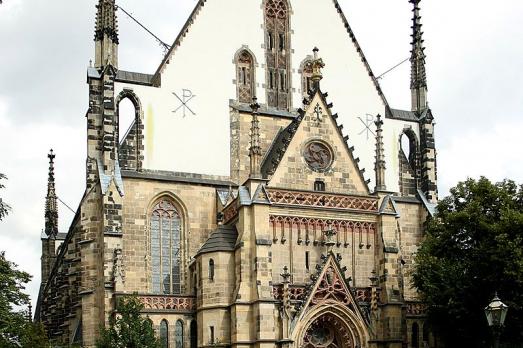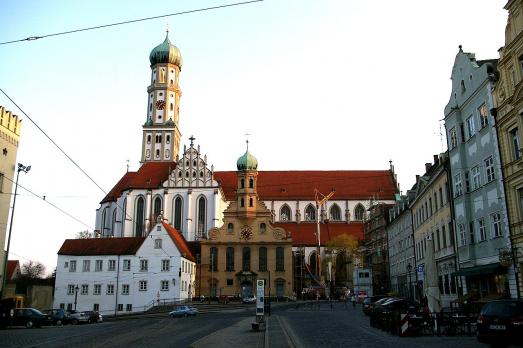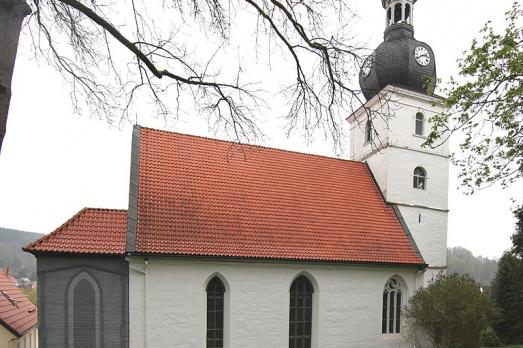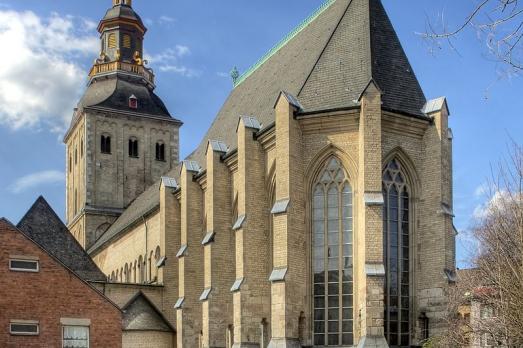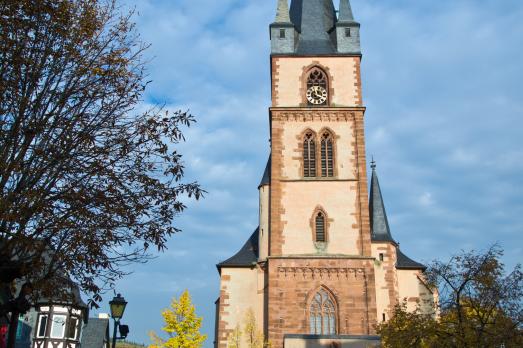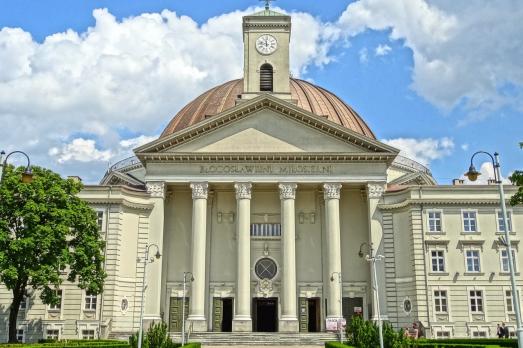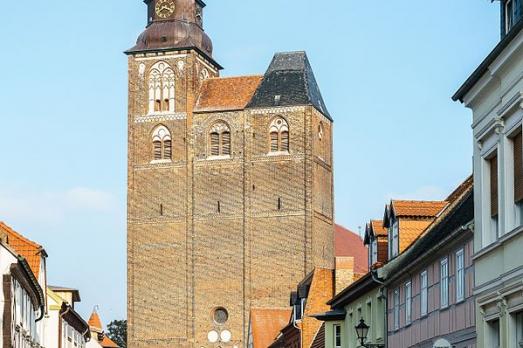
St. Stephen's Church, Tangermünde
Tangermünde, DE
The present building of St. Stephen's Church was built after 1380 on a former pre-1188 church. It was not until 1714 that the north tower was given a baroque dome after the original roof had been destroyed in a city fire some 100 years earlier. Remains of a 14th century painting can be seen around a large hole in the nave vault. They depict four angels with the instruments of Christ's suffering as well as scriptures.
